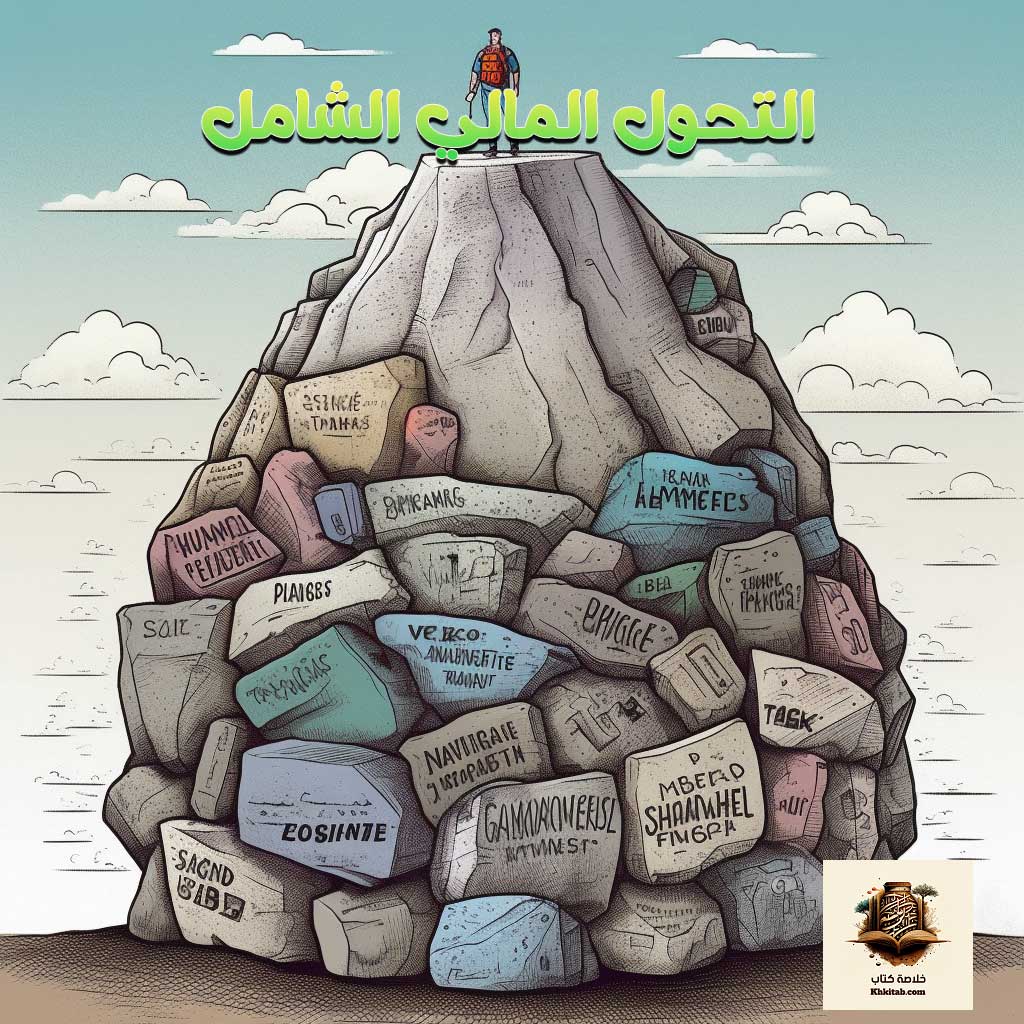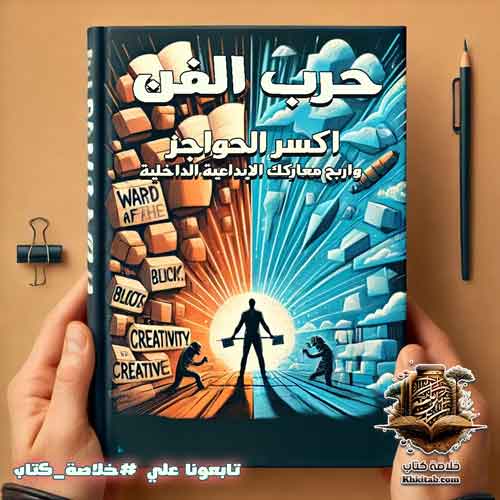
In today’s world, where the boundaries between personal and professional lives are increasingly blurred, “The Man Who Mistook His Job for His Life: How to Thrive at Work by Leaving Your Emotional Baggage Behind” by Naomi Shragai serves as an essential guide to navigating this complex challenge. The book explores the intricate relationship between work and personal emotions, offering profound insights into how an individual’s emotional history can impact their professional performance and workplace relationships.
The book begins by highlighting how individuals, often unconsciously, carry their personal emotions and problems into the workplace. Shragai uses a series of examples and real-life stories to demonstrate how personal experiences, such as family relationships or past traumas, affect how we interact with colleagues, superiors, and various work situations.
Through careful and thoughtful analysis, the book shows how this kind of emotional projection can lead to negative outcomes like mood swings at work, communication difficulties, and even professional conflicts. However, in a constructive manner, the book not only highlights these issues but also offers practical solutions and strategies to overcome these challenges.
Emphasizing the importance of self-awareness and introspection as initial steps, the book helps readers understand how their workplace behaviors are shaped by their emotional backgrounds. Shragai provides advice on developing emotional resilience and managing emotions healthily, illustrating how self-improvement can lead to a more positive and collaborative work environment.
إقرأ أيضا:التكيف والنجاح في عالم التسويق الدوليThe book also discusses the impact of leadership and workplace culture on dealing with emotions at work. It addresses how leaders, by acknowledging and addressing their emotional baggage, can contribute to creating a healthier and more understanding work environment for everyone.
In conclusion, “The Man Who Mistook His Job for His Life” offers readers tools and strategies not just to better understand themselves and their behaviors in the workplace, but also to develop healthy ways to cope with emotional stress and challenges in a work setting. It’s a comprehensive guide that aids in achieving a better balance between professional and personal life, enhancing deeper self-understanding, and improving relationships within the workplace.
How Does Emotional Baggage from Our Past Affect Our Behavior in the Workplace?
One of the pivotal themes in “The Man Who Mistook His Job for His Life: How to Thrive at Work by Leaving Your Emotional Baggage Behind” by Naomi Shragai is the profound impact of emotional baggage, particularly from childhood experiences and past traumas, on workplace behaviors and interactions. This topic delves into the intricate ways our personal histories unknowingly shape our professional lives, a subject that resonates with many who strive for success and harmony in their work environments.
At the heart of this discussion is the concept that our past experiences, especially those from our formative years, lay the groundwork for patterns of behavior and emotional responses that we carry into adulthood. These ingrained responses often come to the fore in the workplace, a setting where pressures and challenges can trigger deeply rooted emotional reactions. For instance, an individual who experienced a lack of support in their childhood might struggle with authority figures in the office, constantly seeking approval or, conversely, resisting guidance.
The book expertly navigates through various scenarios demonstrating how these past emotional experiences can manifest in a professional setting. It might be the disproportionate reaction to criticism, the difficulty in handling stress, or the challenge in forming healthy work relationships. These behaviors are not just isolated incidents; they are a reflection of a deeper, often unaddressed, emotional narrative.
Shragai doesn’t just identify the problem but also guides readers towards solutions. Recognizing and understanding these patterns is the first step in mitigating their impact. This involves introspection, where individuals are encouraged to reflect on their past, identify triggers, and understand the correlation between their historical emotional experiences and their current workplace behaviors.
Moreover, the book provides insights into how addressing these issues not only benefits the individual but also improves the overall workplace environment. When employees start to work through their emotional baggage, it leads to more effective communication, reduced conflicts, and a healthier, more supportive work culture. This transformation is crucial for both personal growth and the enhancement of professional relationships and productivity.
In summary, Shragai’s exploration of emotional baggage in the workplace in “The Man Who Mistook His Job for His Life” offers valuable insights into the deep-seated influences of our personal histories on our work life. By understanding and addressing these influences, individuals can foster a more harmonious and effective workplace, benefitting both their personal and professional growth.
Our Facebook Page – Book Summary
How Do Personal Emotions and Psychological Issues Impact Professional Performance and Relationships?
In “The Man Who Mistook His Job for His Life: How to Thrive at Work by Leaving Your Emotional Baggage Behind,” Naomi Shragai presents a profound exploration of how personal emotions and unresolved psychological issues can significantly impact professional performance and workplace relationships. This theme is central to understanding the often complex interplay between our inner emotional world and our external professional lives.
At the core of this discussion is the recognition that our emotional health does not operate in a vacuum. Instead, it profoundly influences how we interact with colleagues, manage stress, and perceive challenges in our professional environments. For instance, unresolved issues from our past, such as familial conflicts or past traumas, can often resurface in the workplace, manifesting as over-sensitivity to feedback, difficulty in handling pressure, or challenges in maintaining professional boundaries.
Shragai delves into how these personal emotional issues, when left unaddressed, can lead to a cascade of professional challenges. An employee grappling with such issues might exhibit decreased productivity, find it difficult to collaborate effectively, or struggle with maintaining a consistent performance level. This not only affects the individual’s career trajectory but can also have a ripple effect on team dynamics and overall workplace morale.
Moreover, the book highlights the importance of emotional intelligence in the workplace. Shragai argues that developing a deeper understanding of one’s emotional landscape is crucial for professional growth. This involves not just recognizing and managing one’s emotional reactions but also understanding how these reactions can influence interactions with others. For instance, learning how to effectively manage stress or communicate emotional needs in a professional manner can greatly enhance workplace relationships and team cohesion.
In addition to personal development, the book addresses the role of organizational culture in supporting employees’ emotional health. A workplace that recognizes and values emotional intelligence can create an environment where employees feel more supported and understood, leading to higher job satisfaction and retention rates.
In summary, “The Man Who Mistook His Job for His Life” underscores the significant impact of personal emotions and unresolved psychological issues on professional life. It offers insightful perspectives on how these personal aspects, when managed effectively, can lead to improved professional performance, healthier workplace relationships, and a more fulfilling career. This comprehensive approach to addressing emotional health in the workplace is not only beneficial for individuals but is also crucial for creating a more productive and positive work environment.
Life Sciences & Medicine – Book Summary Library (khkitab.com)
How Do Projection and Transference Influence Our Behavior in the Workplace?
In the insightful book “The Man Who Mistook His Job for His Life: How to Thrive at Work by Leaving Your Emotional Baggage Behind,” Naomi Shragai delves into the intricate concepts of projection and transference in the workplace. These psychological phenomena, where individuals unconsciously redirect their emotional responses toward colleagues or work situations, play a pivotal role in shaping interpersonal dynamics and personal well-being at work.
Projection involves attributing one’s own feelings, desires, or impulses to another person. In a professional context, this might manifest when an employee, grappling with internal insecurities or fears, perceives these traits in their colleagues instead. For example, someone who struggles with feelings of inadequacy might project these feelings onto a colleague, perceiving them as incompetent or underperforming. This misattribution not only affects personal interactions but can also lead to skewed decision-making and conflict in the workplace.
Transference, on the other hand, occurs when individuals redirect feelings and desires originally directed to a significant figure in their past, like a parent or caregiver, onto someone in their current life. In the workplace, this can result in employees responding to authority figures, such as managers or supervisors, based on their past experiences with authority figures in their personal lives. This dynamic can greatly influence the employee’s behavior, attitude towards work, and their ability to respond to feedback or guidance.
Shragai’s exploration of these concepts in her book provides a profound understanding of how unconscious emotional patterns, rooted in our past, can influence our current work life. She illustrates how these patterns can sometimes lead to repetitive cycles of misunderstanding, frustration, or conflict in professional relationships. More importantly, she highlights the need for self-awareness and personal growth as key tools to recognize and mitigate the impact of these psychological processes.
By unpacking the intricacies of projection and transference, “The Man Who Mistook His Job for His Life” offers valuable insights into improving workplace dynamics. Understanding these concepts can lead to more empathetic and effective communication, healthier professional relationships, and a more positive work environment. It underscores the importance of addressing our psychological baggage not only for personal growth but also for fostering a more harmonious and productive workplace.
How Can Self-Awareness and Emotional Intelligence Transform Your Workplace Experience?
In “The Man Who Mistook His Job for His Life: How to Thrive at Work by Leaving Your Emotional Baggage Behind,” Naomi Shragai emphasizes the crucial role of self-awareness and emotional intelligence in the workplace. This aspect of the book explores how developing a deep understanding of one’s emotional triggers and reactions can lead to profound transformations in professional environments.
Self-awareness in this context refers to the ability to recognize and understand one’s emotions, triggers, and their subsequent impact on behavior. In the workplace, this translates into an understanding of how personal feelings can influence interactions with colleagues, responses to work-related stress, and overall job performance. Shragai delves into the idea that many of our workplace challenges stem from deeply ingrained emotional responses that, if left unchecked, can lead to repetitive patterns of conflict, stress, and dissatisfaction.
The book further explores the concept of emotional intelligence, which involves not only understanding one’s own emotions but also the ability to empathize with others’ feelings. Emotional intelligence in the workplace is crucial for effective communication, leadership, and building strong team dynamics. It’s about navigating the complex web of interpersonal relationships with a sense of awareness and sensitivity.
Shragai illustrates through various examples how increased self-awareness and emotional intelligence can lead to better conflict resolution, improved decision-making, and stronger professional relationships. For instance, an employee who can identify their stress triggers can implement strategies to manage their reactions, leading to a more harmonious and productive work environment.
Moreover, the author highlights how cultivating these skills can have a ripple effect on the overall workplace culture. A work environment where emotional intelligence is valued and promoted can lead to higher levels of employee engagement, satisfaction, and retention. It fosters a culture of respect, understanding, and open communication, which are essential for a thriving workplace.
In essence, “The Man Who Mistook His Job for His Life” underscores the transformative power of self-awareness and emotional intelligence in the professional sphere. By fostering these skills, individuals can not only enhance their own workplace experience but also contribute to creating a more positive, productive, and empathetic work environment for all. This approach not only benefits the individual but also strengthens the overall health and effectiveness of the organization.
What Are Effective Strategies for Managing Emotions in the Workplace as Suggested in “The Man Who Mistook His Job for His Life”?
In “The Man Who Mistook His Job for His Life: How to Thrive at Work by Leaving Your Emotional Baggage Behind,” Naomi Shragai presents a range of practical strategies for managing emotions effectively in the workplace. These strategies are crucial for separating personal emotions from professional interactions and addressing emotional challenges that arise at work.
One key strategy highlighted in the book is the development of emotional awareness. This involves recognizing when personal emotions, such as frustration, anger, or sadness, are influencing workplace behavior. Shragai suggests that by becoming more aware of these emotional states, individuals can start to understand their triggers and learn to respond rather than react impulsively.
Another important aspect discussed is the practice of mindfulness and reflection. Mindfulness techniques, such as deep breathing and meditation, can help individuals stay grounded and present, reducing the likelihood of emotional overreactions. Reflective practices, like journaling or talking with a trusted colleague or mentor, can provide insights into one’s emotional patterns and offer new perspectives on challenging situations.
Shragai also emphasizes the importance of setting boundaries between personal and professional life. This includes recognizing the need for breaks, setting aside time for self-care, and learning to say no to excessive work demands. Establishing clear boundaries helps in maintaining emotional equilibrium and prevents work-related stress from spilling over into personal life.
Communication skills are also a vital part of emotional management in the workplace. The book advises on developing assertive communication techniques, which allow individuals to express their needs and feelings honestly and respectfully, without letting emotions dictate the conversation. This approach can lead to more constructive interactions and less misunderstanding.
Additionally, the author underlines the significance of seeking support when needed. This could be in the form of talking to a manager about workload concerns, seeking professional counseling for deeper emotional issues, or simply reaching out to peers for support and advice.
In summary, “The Man Who Mistook His Job for His Life” offers a comprehensive guide on how to manage emotions in the workplace effectively. By implementing strategies such as emotional awareness, mindfulness, boundary setting, assertive communication, and seeking support, individuals can navigate the emotional challenges of the workplace more effectively, leading to a healthier, more balanced, and productive professional life. These strategies not only benefit the individual but also contribute to a more harmonious and efficient work environment.
How Can Addressing Personal Emotional Issues Lead to Healthier Work Relationships?
In “The Man Who Mistook His Job for His Life: How to Thrive at Work by Leaving Your Emotional Baggage Behind,” Naomi Shragai provides insightful guidance on building healthier relationships in the workplace by addressing personal emotional issues. The book explores various ways in which understanding and managing one’s own emotional baggage can significantly improve communication, reduce conflicts, and foster positive interactions among colleagues.
One of the key concepts Shragai emphasizes is the role of self-awareness in interpersonal relationships. Recognizing and understanding one’s own emotional triggers and responses can prevent misunderstandings and unnecessary conflicts at work. For example, an employee who is aware of their tendency to react defensively to criticism can work on responding more constructively, thus improving interactions with their peers and supervisors.
The book also highlights the importance of effective communication skills in building healthy work relationships. This includes not only verbal communication but also non-verbal cues such as body language and tone of voice. Shragai suggests that being open, honest, and empathetic in communication helps in forming trust and understanding among team members. It’s about expressing oneself clearly and respectfully, while also being receptive to others’ viewpoints and emotions.
Conflict resolution is another critical area addressed in the book. Shragai advises that acknowledging and addressing personal emotional issues can lead to more effective conflict resolution strategies. Instead of avoiding conflicts or reacting emotionally, individuals can learn to approach disagreements with a problem-solving mindset, seeking mutually beneficial solutions.
Furthermore, the book delves into the impact of emotional intelligence on workplace relationships. Developing emotional intelligence involves not only being aware of one’s own emotions but also being attuned to the emotions of others. This skill is invaluable in creating a supportive and collaborative work environment, where employees feel valued and understood.
Shragai also discusses the ripple effect of positive workplace relationships. When individuals work on their emotional issues and improve their interactions with colleagues, it can lead to a more positive and productive work environment overall. This includes reduced stress levels, increased job satisfaction, and higher team morale.
In summary, “The Man Who Mistook His Job for His Life” sheds light on the profound impact that addressing personal emotional issues can have on workplace relationships. By fostering self-awareness, improving communication skills, effectively resolving conflicts, and enhancing emotional intelligence, individuals can contribute significantly to creating a healthier, more supportive, and more productive workplace. This approach not only benefits the individual employees but also strengthens the team and organization as a whole.
How Can Leaders’ Recognition of Their Emotional Baggage Shape Organizational Culture and Foster a Supportive Work Environment?
In “The Man Who Mistook His Job for His Life: How to Thrive at Work by Leaving Your Emotional Baggage Behind,” Naomi Shragai explores the significant impact that leaders’ awareness of their own emotional baggage can have on shaping organizational culture and creating a more empathetic and supportive work environment. The book delves into the idea that leaders play a pivotal role in setting the tone for the emotional climate of their organizations.
A central theme in Shragai’s discussion is the concept that leaders, like anyone else, carry their own emotional histories and patterns into the workplace. These personal experiences and unresolved emotional issues can unconsciously influence their decision-making, communication style, and approach to leadership. For example, a leader who has not addressed their issues with authority might struggle with delegation, potentially leading to micromanagement or difficulty in trusting their team.
Shragai emphasizes the importance of self-awareness for leaders. By recognizing and understanding their emotional triggers and biases, leaders can prevent these personal issues from negatively impacting their leadership style and interactions with employees. This awareness enables leaders to respond to workplace challenges and employee needs more thoughtfully and empathically, rather than reacting based on unresolved personal emotions.
The book also discusses how leaders’ emotional intelligence can transform organizational culture. When leaders demonstrate empathy, understanding, and emotional regulation, it sets a positive example for the entire organization. This can create a work environment where open communication, mutual respect, and emotional support are valued. Such an environment not only improves employee morale and job satisfaction but also enhances overall productivity and teamwork.
Furthermore, Shragai addresses the role of leaders in creating safe spaces for emotional expression in the workplace. Leaders who acknowledge their emotional baggage and encourage others to do the same foster a culture of authenticity and psychological safety. This openness allows for more honest conversations about challenges and conflicts, leading to healthier and more effective problem-solving and collaboration.
In summary, “The Man Who Mistook His Job for His Life” offers a compelling case for the importance of leaders recognizing their emotional baggage and its impact on organizational culture. Such recognition and self-awareness can lead to a more empathetic, supportive, and productive work environment. It underlines that leaders who are emotionally intelligent and self-aware can positively influence the emotional health of their organization, paving the way for a more engaged and resilient workforce.
How Does Managing Emotional Baggage Contribute to Personal Development and Professional Growth as Explained in “The Man Who Mistook His Job for His Life”?
In “The Man Who Mistook His Job for His Life: How to Thrive at Work by Leaving Your Emotional Baggage Behind,” Naomi Shragai provides insightful guidance on how addressing and managing one’s emotional baggage is not only beneficial for personal well-being but also a key driver for professional growth and job satisfaction. The book delves into the interconnectedness of personal development and professional advancement, emphasizing that the two are not mutually exclusive but rather deeply interlinked.
Shragai begins by underscoring the concept that unaddressed emotional baggage can often hinder one’s professional life. Emotional issues, such as unresolved conflicts, fears, or traumas from one’s past, can manifest in various workplace behaviors. These can include challenges in decision-making, difficulties in handling stress, and strained relationships with colleagues or superiors. By recognizing and addressing these emotional burdens, individuals can break free from patterns that limit their professional potential.
The book stresses the importance of self-awareness in this journey. Developing a deep understanding of one’s emotional triggers and responses allows for a more measured and effective approach to workplace challenges. For instance, an individual who has worked through their fear of failure may find themselves more willing to take on new challenges and opportunities, showing increased initiative and creativity in their role.
Furthermore, Shragai explores how emotional maturity, achieved through personal development, enhances one’s leadership capabilities. Leaders who are in tune with their emotions and have dealt with their emotional baggage are better equipped to handle team dynamics, provide empathetic leadership, and foster a positive work environment. This not only leads to better team performance but also increases a leader’s credibility and influence within the organization.
The book also highlights that managing emotional baggage can lead to greater job satisfaction. When individuals are not bogged down by unresolved emotional issues, they are more likely to find fulfillment in their work, maintain healthier work-life balance, and have a more positive outlook towards their career.
In addition, Shragai points out that professional growth often necessitates stepping out of one’s comfort zone, which is much easier when one is not weighed down by emotional baggage. This can manifest in seeking new opportunities, embracing change, and continuously learning and developing new skills.
In summary, “The Man Who Mistook His Job for His Life” articulates that managing emotional baggage is crucial for both personal development and professional growth. It enables individuals to overcome barriers to their professional advancement, cultivates emotional intelligence crucial for leadership, and contributes to overall job satisfaction and career fulfillment. The book provides a compelling argument that personal emotional well-being and professional success are deeply interconnected, and focusing on one invariably benefits the other.
How Does “The Man Who Mistook His Job for His Life” Emphasize the Importance of Achieving Work-Life Balance?
In “The Man Who Mistook His Job for His Life: How to Thrive at Work by Leaving Your Emotional Baggage Behind,” Naomi Shragai addresses the critical issue of maintaining a healthy balance between professional responsibilities and personal life. The book provides a comprehensive exploration of how intertwining personal emotional issues with work can disrupt this balance and offers strategies to effectively manage and separate the two realms.
Shragai starts by illustrating how easy it is for individuals to lose sight of the boundary between their professional and personal lives, especially when they carry emotional baggage into the workplace. This blending can lead to increased stress, burnout, and a decrease in overall life satisfaction. For instance, an individual who is unable to detach from work-related worries may find it challenging to enjoy personal time, affecting relationships and personal well-being.
The book emphasizes the concept of setting clear boundaries as a key strategy for achieving work-life balance. Shragai suggests practical steps such as designating specific times for work and personal activities, learning to say no to unreasonable work demands, and prioritizing self-care. These actions help individuals reclaim control over their time and energy, allowing them to be more present and effective in both work and personal life.
Additionally, “The Man Who Mistook His Job for His Life” delves into the role of emotional self-awareness in achieving work-life balance. By understanding and managing their emotional responses, individuals can prevent work stress from spilling over into their personal life. The book encourages readers to develop strategies for emotional regulation, such as mindfulness practices, which can help in maintaining a calm and balanced approach in both personal and professional situations.
Shragai also discusses the impact of work-life balance on overall job performance and satisfaction. A healthy balance leads to increased productivity, creativity, and a more positive attitude towards work. Conversely, when work-life balance is not maintained, it can lead to a decline in job performance and satisfaction, highlighting the importance of this balance for both employers and employees.
Furthermore, the book explores how organizations can play a role in supporting their employees’ work-life balance. It advocates for workplace policies and cultures that respect personal time and promote flexibility, thus facilitating a more supportive and productive work environment.
In summary, “The Man Who Mistook His Job for His Life” underlines the vital importance of maintaining a healthy work-life balance. By setting boundaries, developing emotional self-awareness, and creating supportive workplace environments, individuals can enhance their personal well-being and professional effectiveness. This balance is not only beneficial for the individual but also contributes to a healthier, more dynamic, and productive workplace.
When Is It Time to Seek Professional Help for Emotional Issues Impacting Professional Life, as Discussed in “The Man Who Mistook His Job for His Life”?
In “The Man Who Mistook His Job for His Life: How to Thrive at Work by Leaving Your Emotional Baggage Behind,” Naomi Shragai emphasizes the critical juncture when professional help may be necessary to address deep-seated emotional issues that significantly impact one’s professional life. The book acknowledges that while self-awareness and individual strategies are vital in managing emotional baggage, there are instances where the intervention of a professional therapist or counselor is key to overcoming these challenges.
Shragai highlights the signs that indicate when an individual might need to seek professional help. One such sign is the repeated pattern of emotional issues that not only persist over time but also adversely affect work performance, relationships, and overall job satisfaction. This could manifest as consistent difficulties in handling workplace stress, chronic feelings of inadequacy, conflicts with colleagues or superiors, or a general sense of unhappiness in one’s career.
The book also discusses the importance of recognizing the limits of self-help. While personal efforts such as mindfulness, emotional regulation techniques, and work-life balance strategies are beneficial, they may not be sufficient to address deeper psychological issues. Professional therapy or counseling can provide a structured and expert approach to exploring and resolving these issues, which might stem from past experiences or deeply ingrained behavioral patterns.
Moreover, Shragai explains how seeking professional help can be a transformative experience, leading to significant improvements not only in one’s professional life but also in personal well-being. Therapy can offer new perspectives, coping strategies, and insights into emotional patterns, enabling individuals to break free from the cycles that hamper their professional growth and personal happiness.
In addition, the book addresses the stigma often associated with seeking mental health support. Shragai encourages readers to view therapy as a proactive step towards self-improvement, rather than a sign of weakness. This change in perspective can be empowering and is crucial in a corporate culture that often values resilience and self-sufficiency.
In conclusion, “The Man Who Mistook His Job for His Life” advocates for recognizing the value of professional help in dealing with emotional issues that impact one’s professional life. Acknowledging the need for and seeking such help is portrayed as a crucial step towards personal development and professional success. The book underscores that addressing emotional health with the assistance of a professional is not only beneficial for individual well-being but also contributes positively to one’s career trajectory and overall quality of life.








